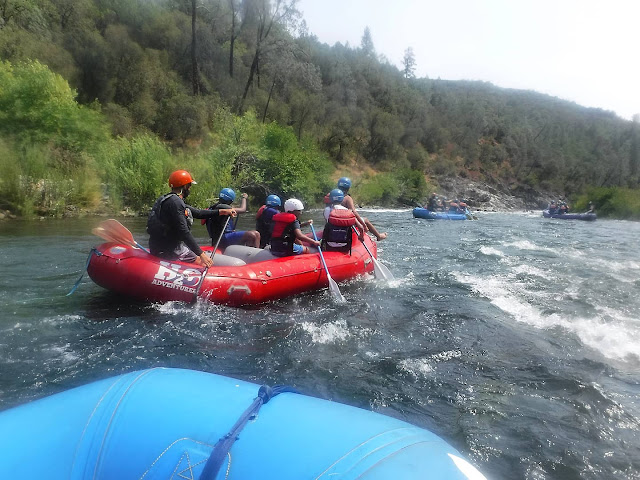“But clouds bellied out in the sultry heat, the sky cracked open with a crimson gash, spewed flame-and the ancient forest began to smoke. By morning there was a mass of booming, fiery tongues, a hissing, crashing, howling all around, half the sky black with smoke, and the bloodied sun just barely visible. --- Yevgeny Zamyatin
It is the end of summer now, and it should be the perfect time for paddling and camping adventures. But it's not. I look out my office window into an orange glow of haze. It seems odd that after being isolated during the Covid pandemic where we had to sit in our homes a good chunk of last year, that we are all now forced back inside looking out for pretty much the same reason. It's not safe to breathe the air.
For most of the summer, California has been contending with wildfires. It has become almost an annual battle Throughout the state as the fire season starts earlier and earlier every year. The smoke from these fires has made it unhealthy just to be outside, let alone being on a river or a lake. It has become extremely frustrating to area paddlers
"My summer has been interrupted with all those wildfires, closing several lakes and venues. Even locally recently, the air quality was really bad keeping us/me stuck indoors, while it's hotter than hell outside and unhealthy to breathe the air as well," wrote my paddling partner John Taylor on Facebook this past week.
Last weekend, the wildfires burning in Northern California, including the rapidly expanding Caldor fire that now even threatens Lake Tahoe, are affecting more people than those forced to evacuate.
Its smoke has choked the skies of the region sending the air quality index to unhealthy levels. Medical experts say that when the Air Quality Index exceeds 201 to 300, the air is judged to be very unhealthy. Children, asthmatics, and people with heart or lung conditions should avoid the outdoors, and all others should reduce their outdoor exertion. When the Air Quality Index goes over 300, it is hazardous for everyone.
The effects of smoky air pollution can be mild, like eye and throat irritation, or serious, including heart and respiratory issues. They can also linger even after the smoke has cleared, as pollution can cause inflammation of the lung tissue and increase the vulnerability to infections.
Simply put. On days like those, it's a good idea to keep your boat, paddle at home, and stay inside.
The unbearable part is why I'm worried about losing a summertime paddling day. People are losing their homes and their livelihoods every day. They've been evacuated from the dangerous areas, as firefighters battle the flames that every day seem to get bigger and bigger. My heart is also breaking for those beautiful places that are now lost. For those historic places that have been turned into ashes. And for the wildlife that can't outrun the flames. It is sad to think, that the majority of wildlife mortalities will come later, after the fire is out, due to the loss of habitat and food sources burned in the path of the fire.
Since early July, 93 large wildfires have destroyed more than 2.5 million acres. Fires are currently burning in 13 states, according to the National Interagency Fire Center. The skies near these fires are thick with smoke but also impacted air quality several thousand miles away. The sun glowed red-orange as haze as the east coast has experienced similar smoky conditions this summer.
“We’re seeing lots of fires producing a tremendous amount of smoke, and … by the time that smoke gets to the eastern portion of the country where it’s usually thinned out, there’s just so much smoke in the atmosphere from all these fires that it’s still pretty thick,” said David Lawrence, a meteorologist with the National Weather Service told media outlets, “Over the last two years we’ve seen this phenomenon.”
Weather watchers say, that these devastating effects of the wildfires have been exacerbated by the effects of climate change and it is only likely to worsen in the future.





















